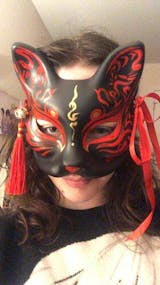I am not the type of person to write reviews but here it goes.
I really needed the clothes for an unexpected party but I chose the fast delivery option and I should say I’m impressed by their fast delivery. The product matches the pictures displayed and I’m impressed by the quality. Kudos to Eiyo Kimono.
Filters
The Exquisite Story Behind Kimono Sashes

Kimonos are Japan's most prominent cultural dress. Known for being elegant and luxurious, the kimono is a complex garment that the Japanese wear during their most significant events. Kimonos are versatile dresses with many subcategories of their own that vary in ease and formality. However, almost all kimonos are crafted from fine materials and designed with great care. The decoration itself is very costly and must be done by skilled weavers as it is very delicate. As the garment is worn by men, women, and children alike, it is quite popular throughout Japan and remains a celebrated dress.
Kimono & Kimono Sash
Kimonos are loosely-fitted garments that resemble a floor-length robe made with silk or other luxurious fabrics. The dress is gathered and tied at the waist with an Obi belt, also called a kimono sash. The sash is one of the significant components of a kimono, and the garment is incomplete without it. This sash secures the kimono and keeps it in place, so it does not come apart when you move.
What is the kimono sash called? Here is a list of the names for kimono sash?
- Obi
- Obi belt
- Obi sash
- Kimono belt
- Yukata belt
- Japanese belt
- Japanese obi belt
- Japanese kimono sash
- Japanese obi belt
- Traditional obi belt
What does obi mean?
The word 'obi' means sash in Japanese, and it is used to tie the kimono's front over its left part. The obi needs to be made of a stiff material that does not fold or bend with movement. This is why silk and linen are often preferred when stitching the obi for most kimonos. The obi sash is also similar to the rest of the kimono. Sometimes, it can be decorated with silk thread embroidery that uplifts the tone of the obi. The obi of a man and woman can sometimes differ in length.
What is a kimono sash?
A kimono sash is usually made of satin, silk, or other luxurious materials to uphold the two sides of the kimono dress. This sash is essential to the garment as it secures the dress and makes your kimono look its best. The kimono sash is an excellent medium through which you can decorate your kimono. The belt can be the only part you choose to decorate for those who prefer more straightforward but regal kimonos. The kimono sash can be embroidered, painted, or printed according to your preferences.
What is the purpose of a kimono sash?
A kimono sash helps help to keep your kimono in its place, but it is also a decorative element in the dress that is often quite beautiful. A kimono sash is usually about 12 feet long if used in a woman's kimono. For men, the belt is usually one-fourth shorter than this. As for their width, the kimono sash is 12 inches wide, making it prominent enough in the dress but not overwhelming to the rest of the fabric. Gold or silver might be threaded into the material in elegant kimonos for a luxurious look.
How to make a kimono sash? What are they made of?
A kimono sash is wrapped around the mid-section of the kimono and tied at the back. It is usually made of some stiff material such as silk or cotton. In contemporary kimonos, the sash is generally made wide enough to cover most of the chest. It is also frequently embroidered and dyed, though the methods of coloring fabric for a kimono vary significantly from region to region in Japan. A kimono sash may include finer decorating such as stencil-art or flower printing. Kimono sashes are manufactured differently from the rest of the kimono as they need to stand out from the garment and keep it in place while the wearer moves around.
How to tie a kimono sash?
Some kimono sashes may be too wide to be tied all at once at the back of the dress. This is why there are several more minor knots under the belt known as koshihimo that keep the sash secure. Kimono sashes vary in their printing and designs by the degree of formality in the event. Lightweight silk or cotton sashes are worn on informal events, and they are easier to tie than brocade sashes that are reserved for more formal occasions. A kimono sash is costly to buy, and it may be more expensive than the rest of the dress, making it a precious piece. The kimono is challenging to assemble by beginners, so it is helpful to have someone assist you with the different parts that go into the garment.
What are the different clothing parts to accessorize a kimono?
The kimono sash is significant to decorate a kimono, as it is the obi and looks the most prominent in the dress. Geta is special footwear worn under the kimono made from wood. These sandals are usually elevated and comfortable in harsh weather conditions such as rain or snow. Zori and tabi socks are worn together, and they are both ancient Japanese accessories. The tabi socks are cotton socks and usually white and different in structure than conventional socks. Women might also carry a color-coordinated handbag or a paper hand fan informal events. Hand fans paired with the kimono are usually printed with cherry blossoms or pine trees.
Is there a difference between an obi and a sash?
An ordinary sash is not the same as an obi, exclusive to the kimono dress. The obi is a complex sash that is often the most decorative part of the kimono. Therefore, the obi has more cultural importance to the Japanese than traditional sashes on their garments. Although the obi is a type of sash that is an essential part of the kimono, it is not worn in the usual manner. It has a sturdy material and is also decorated quite luxuriously for the benefit of the garment. The obi must always look the best in the kimono.






















































